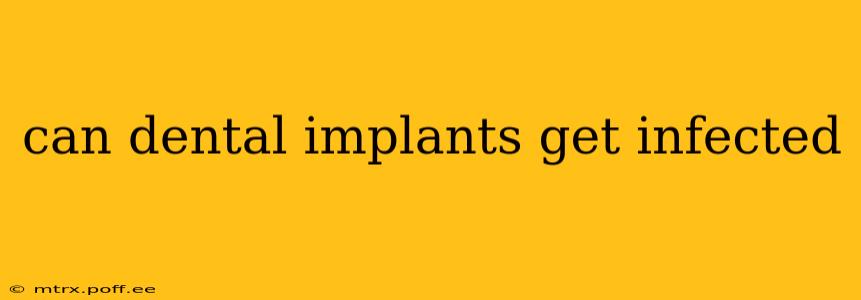Dental implants, while remarkably successful in restoring teeth, aren't immune to infection. Understanding the risks, symptoms, and prevention strategies is crucial for maintaining long-term oral health. This comprehensive guide will explore the possibility of implant infection, address common concerns, and provide valuable insights for patients and dental professionals alike.
What is Peri-implantitis?
The most common type of infection associated with dental implants is peri-implantitis. This is an inflammatory condition affecting the tissues surrounding the implant, similar to periodontitis (gum disease) around natural teeth. Peri-implantitis leads to bone loss around the implant, potentially resulting in implant failure if left untreated. Unlike gingivitis (inflammation of the gums), which is reversible with improved oral hygiene, peri-implantitis can be progressive and more challenging to manage.
What Causes Peri-implantitis?
Several factors contribute to the development of peri-implantitis:
-
Poor Oral Hygiene: Insufficient brushing and flossing allow plaque and bacteria to accumulate around the implant, initiating inflammation. This is arguably the most significant risk factor.
-
Smoking: Smoking impairs the body's healing process and reduces blood flow to the gums, hindering the body's ability to fight infection.
-
Diabetes: Poorly controlled diabetes compromises the immune system, making individuals more susceptible to infections, including peri-implantitis.
-
Bruxism (Teeth Grinding): Excessive grinding or clenching can put stress on the implant and surrounding tissues, potentially leading to inflammation and infection.
-
Inadequate Implant Placement: In some cases, improper implant placement or surgical technique can increase the risk of infection.
-
Existing Gum Disease: Patients with pre-existing periodontal disease are at a higher risk of developing peri-implantitis.
What are the Symptoms of a Dental Implant Infection?
Recognizing the signs of peri-implantitis early is crucial for effective treatment. Symptoms can include:
-
Redness and Swelling: The gums surrounding the implant may appear red, swollen, and inflamed.
-
Bleeding: Bleeding during brushing or flossing is a common sign.
-
Pus: The presence of pus indicates an active infection.
-
Loose Implant: In advanced cases, the implant may become loose or mobile.
-
Pain: While not always present, pain or discomfort around the implant can occur.
How is Peri-implantitis Treated?
Treatment for peri-implantitis depends on the severity of the infection. Options may include:
-
Improved Oral Hygiene: Meticulous cleaning around the implant using specialized brushes and floss is essential. Your dentist might recommend professional cleaning.
-
Antibiotics: Antibiotics may be prescribed to combat the infection.
-
Surgical Treatment: In more severe cases, surgical procedures may be necessary to remove infected tissue and promote healing.
Can You Prevent Dental Implant Infections?
Prevention is key! Following these recommendations can significantly reduce the risk of peri-implantitis:
-
Maintain Excellent Oral Hygiene: Brush and floss meticulously at least twice a day. Use an antimicrobial mouthwash as recommended by your dentist.
-
Regular Dental Checkups: Attend regular checkups and professional cleanings to monitor the implant and surrounding tissues.
-
Control Systemic Diseases: Manage conditions like diabetes effectively.
-
Quit Smoking: Smoking significantly increases the risk of implant infection.
-
Avoid Bruxism: Consider using a mouthguard if you grind your teeth.
What are the Long-Term Consequences of Untreated Peri-implantitis?
Ignoring peri-implantitis can have serious consequences:
-
Bone Loss: Progressive bone loss around the implant weakens its support, leading to implant failure.
-
Implant Loss: In severe cases, the implant may need to be removed.
-
Infection Spread: In rare cases, the infection can spread to adjacent structures.
How Long Does it Take to Recover from a Dental Implant Infection?
Recovery time varies depending on the severity of the infection and the treatment received. Minor infections may resolve within weeks with improved oral hygiene and antibiotics, while more severe cases requiring surgery may require several months for complete healing.
Is it Possible to Get a Second Implant After an Infection?
In many cases, a second implant can be placed after successful treatment of peri-implantitis. However, this depends on the extent of the bone loss and the overall health of the surrounding tissues. A thorough assessment by your dentist or periodontist is necessary to determine the feasibility of a replacement implant.
This information is for educational purposes only and does not constitute medical advice. Always consult with a qualified dental professional for any concerns about your dental implants or oral health. They can provide a personalized assessment and recommend the most appropriate treatment plan.
